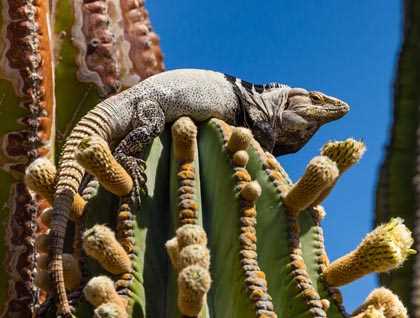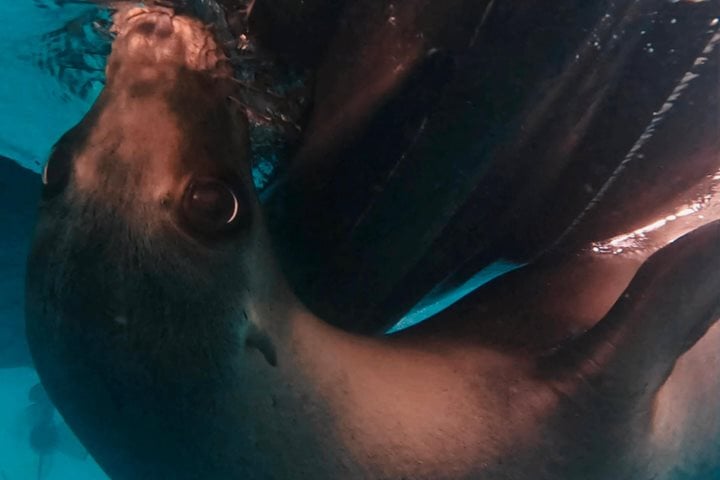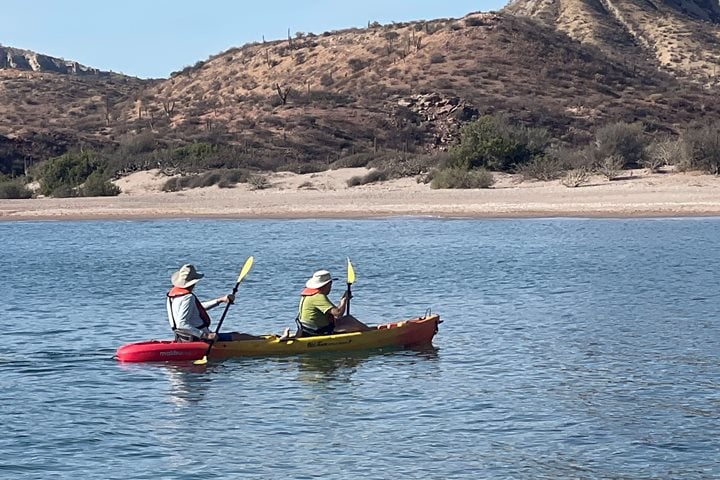Another magical day in Baja California unfolds as the National Geographic Sea Lion approaches Isla San Esteban just after sunrise. The colorful layers of folded, faulted, and contorted rock exposed in the sea cliffs glow in the morning light. A fresh breeze is blowing from the north, so we tuck in close to the island for protection. Conditions are perfect for going ashore to explore.
Isla San Esteban is a remote island that has been isolated by uplift and erosion during the opening of the Gulf of California over the past 5 to 6 million years. Geographic isolation brings about endemism in the plant and animal world, where new and unique species evolve over time and are found nowhere else in the world. Here, on Isla San Esteban, we hope to see two species of lizard endemic to Baja California, the spiny-tailed iguana (ctenosaura conspicuosa) and the giant pinto chuckwalla (sauromalus varius).
We weren’t on shore long, hiking up the sandy wash in Arroyo Limantor, when we spied our first spiny-tailed iguana sunning itself on a rock. This omnivorous lizard is known for climbing to the top of the towering cardón cactus to eat the fresh flowers that blossom at night, and sure enough, once the day warmed up we found many perched high above the ground. We also had good luck finding the more reclusive vegetarian chuckwallas hiding among the rocks not far from their caves and burrows.
Meanwhile, along the coast, expedition landing craft cruises explored the rocky shoreline marveling at the colorful and complex rocks exposed in the cliffs, testimony to the plate tectonic action that has rifted the Baja Peninsula away from mainland Mexico. California sea lions and a great variety of birds were observed.
During the afternoon the National Geographic Sea Lion navigated to the east to Isla Tiburón, the largest island in the Gulf. We anchored in the protected waters of Monument Bay and went ashore to explore the pebble beach and made more explorations by expedition landing craft of the offshore islands nearby. A great variety of birds call these rocky islands home, including great blue herons, pelicans, yellow-footed gulls, along with numerous osprey that were actively attending to their nests with chicks. At one point, a peregrine falcon was observed stooping on an osprey as it carried a fish back to the nest.
Back on board we enjoyed another delicious dinner and a rare quiet night at anchor with dreams of tomorrow’s adventures exploring the Sea of Cortez.







